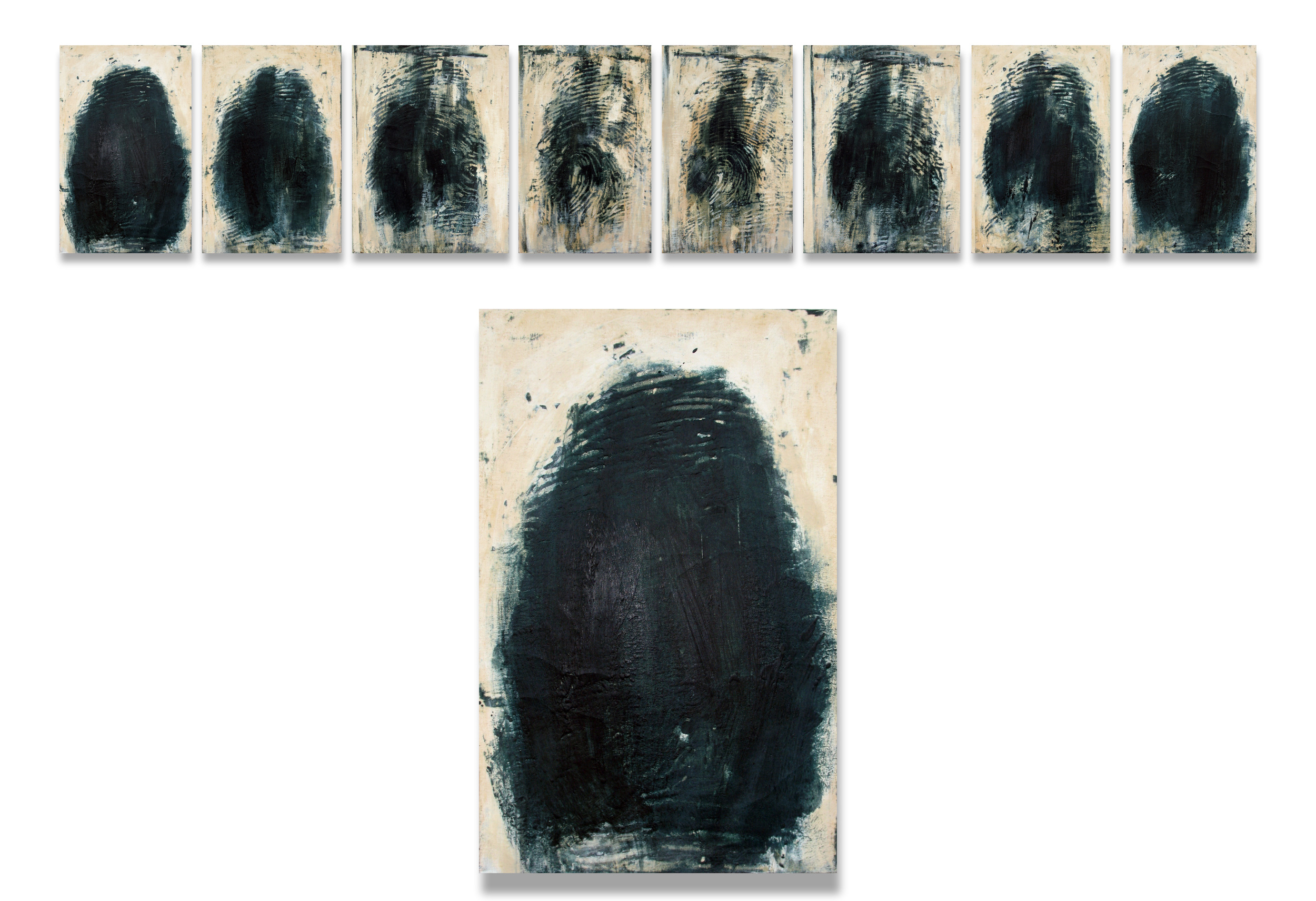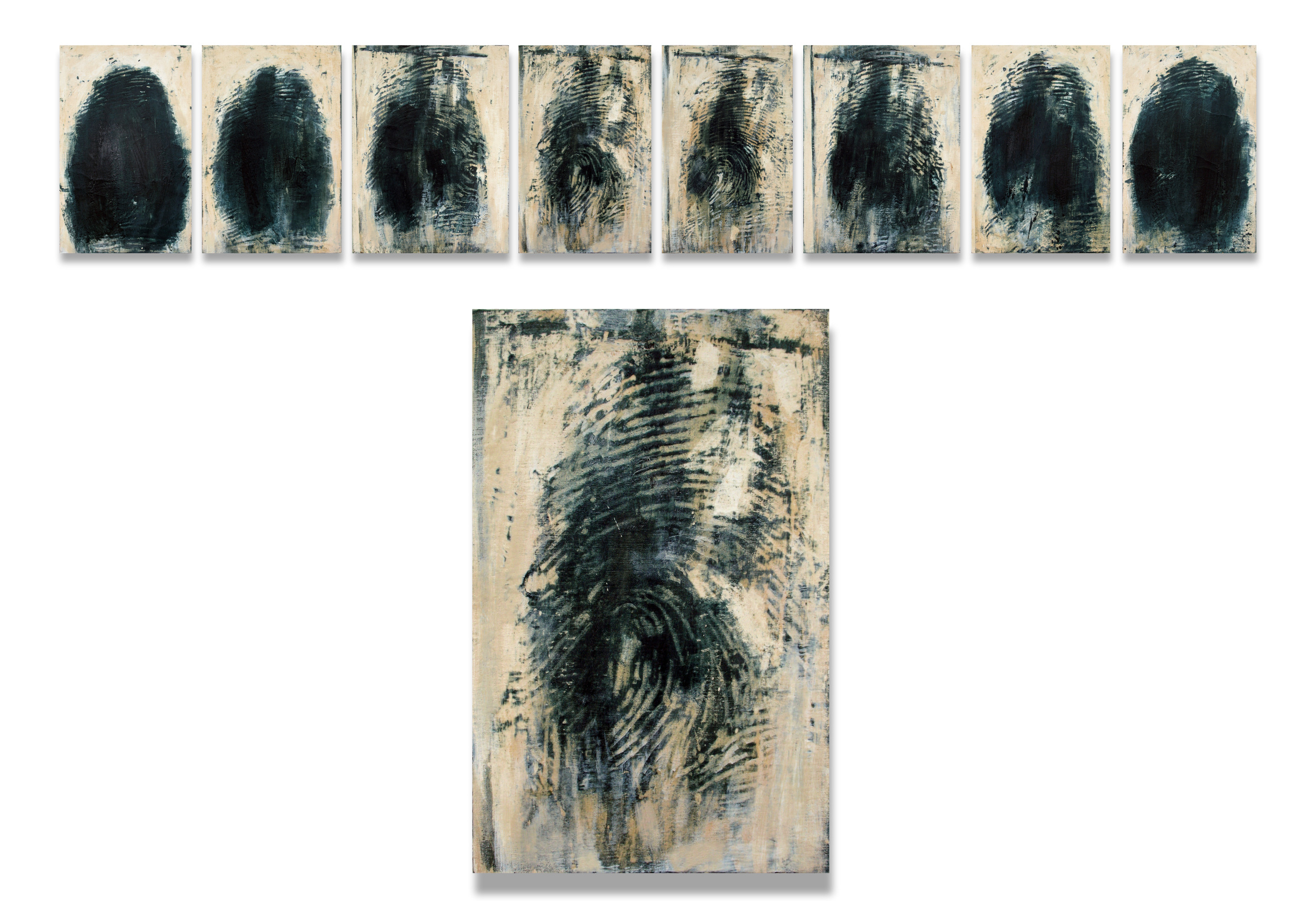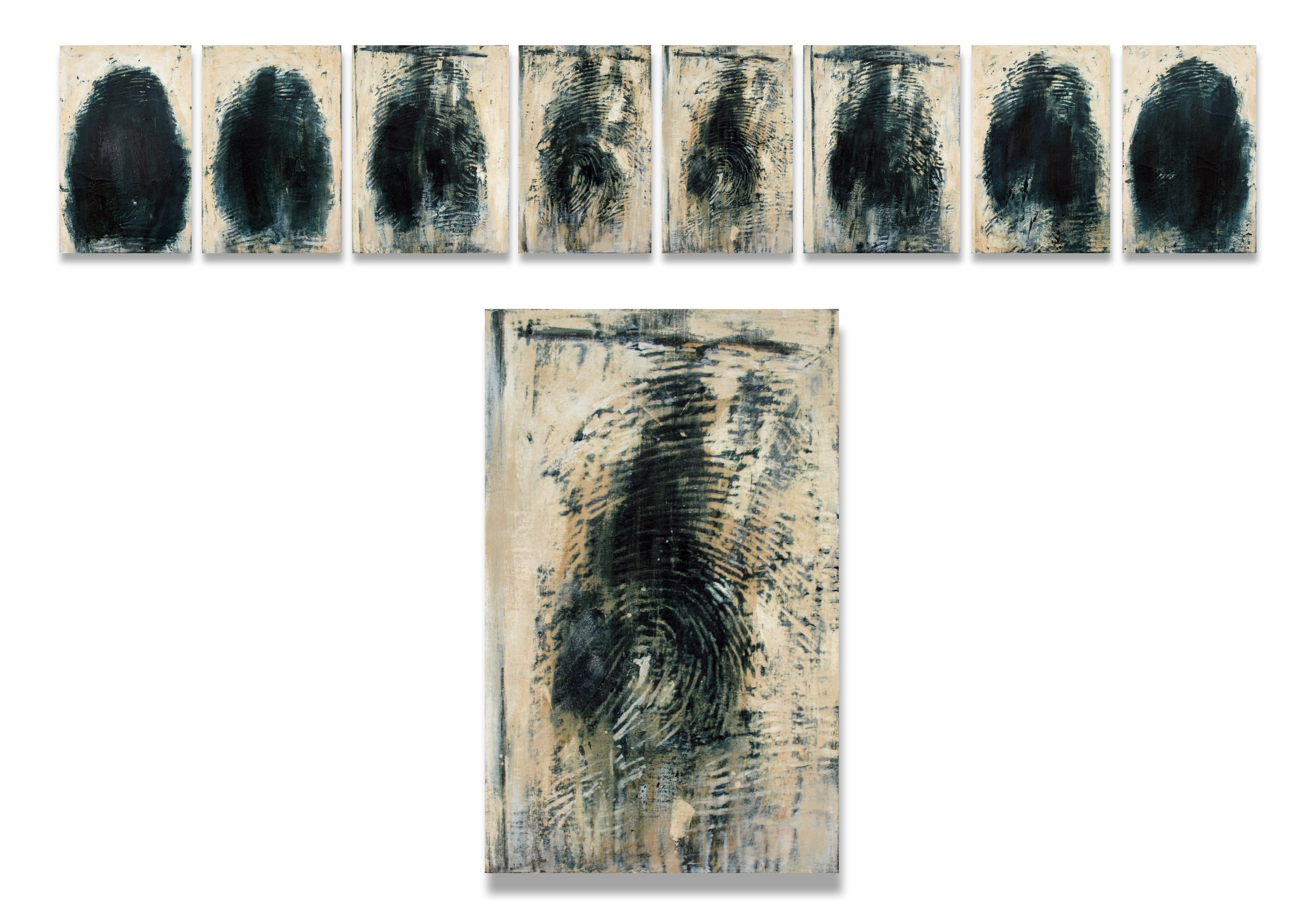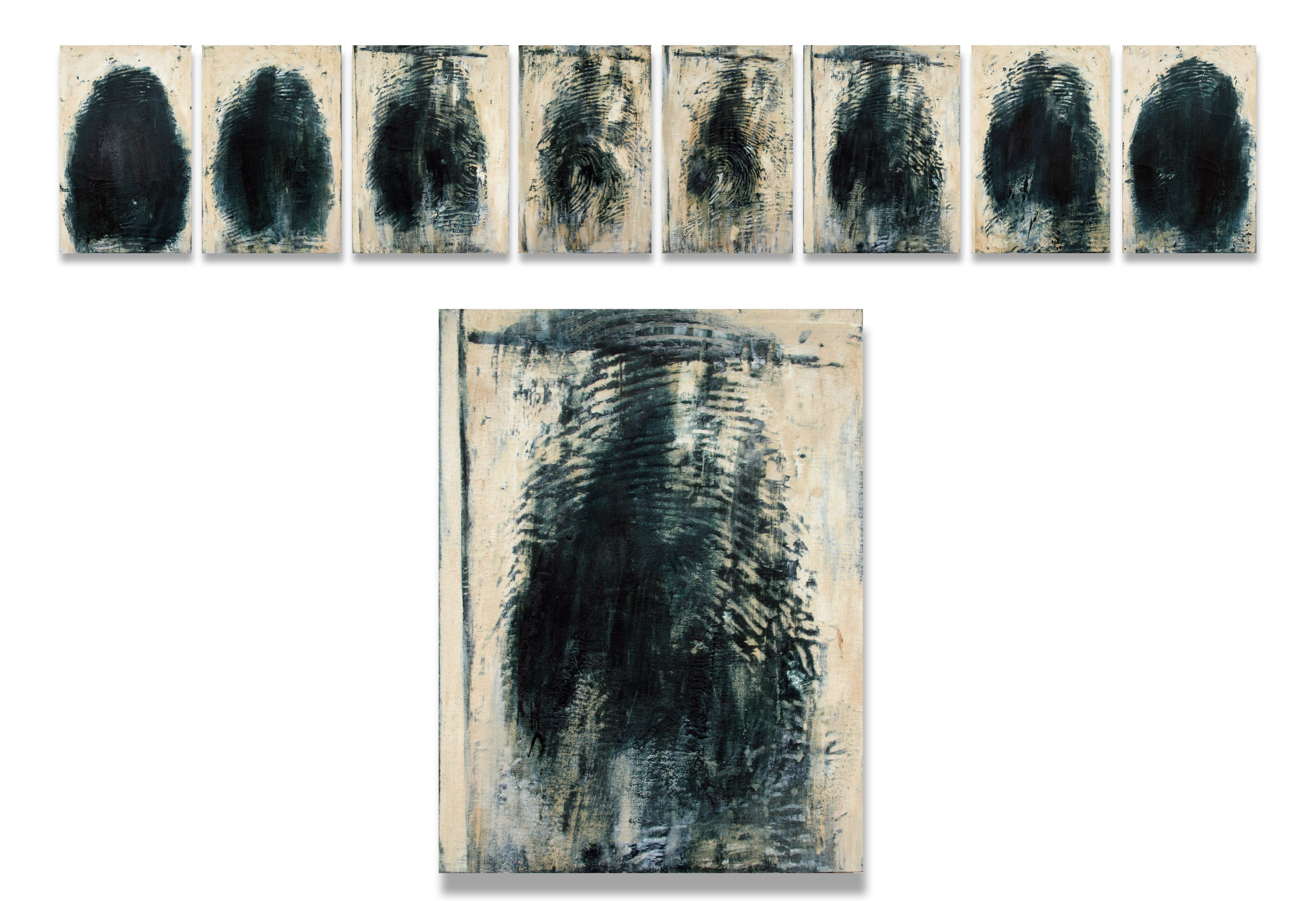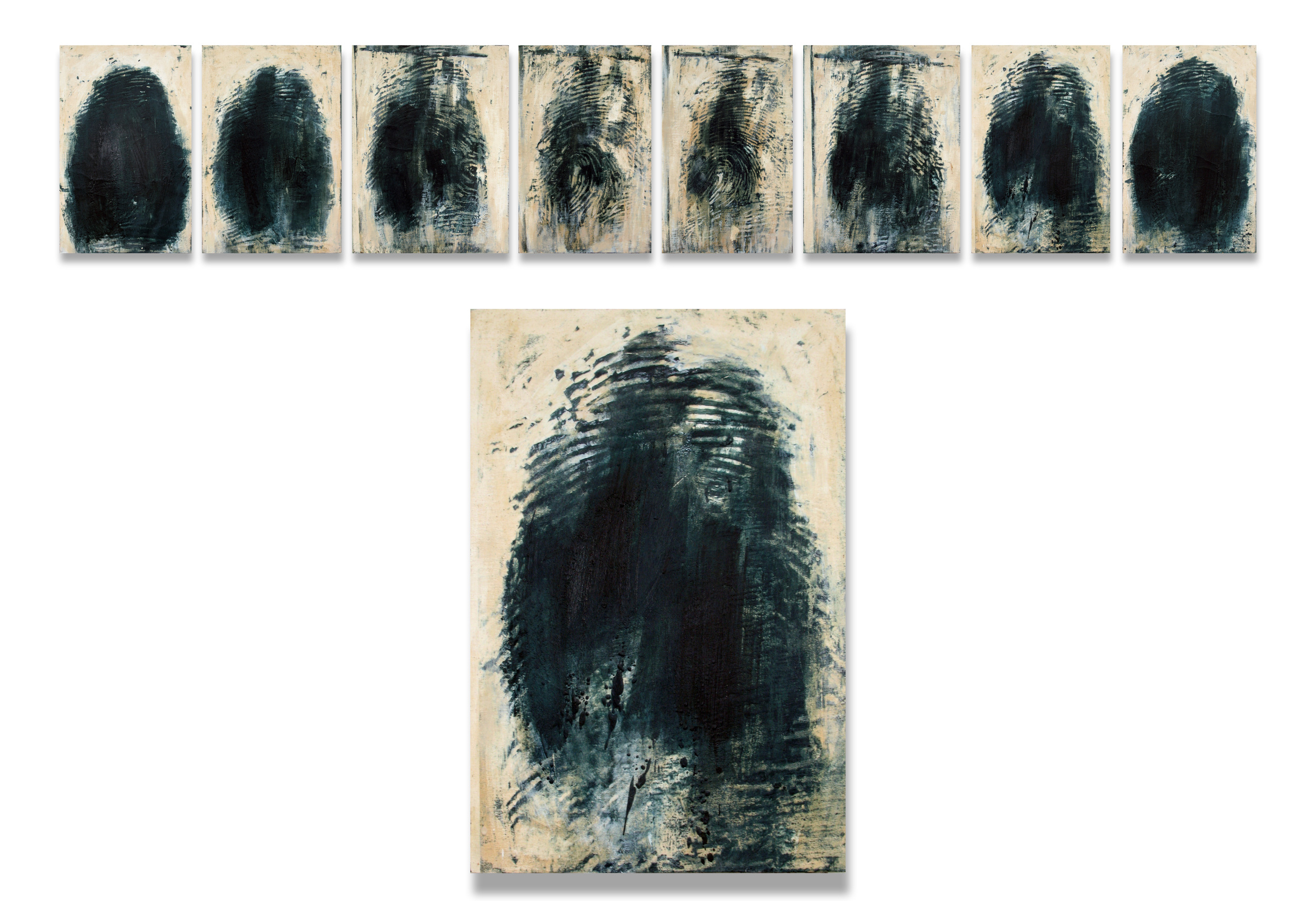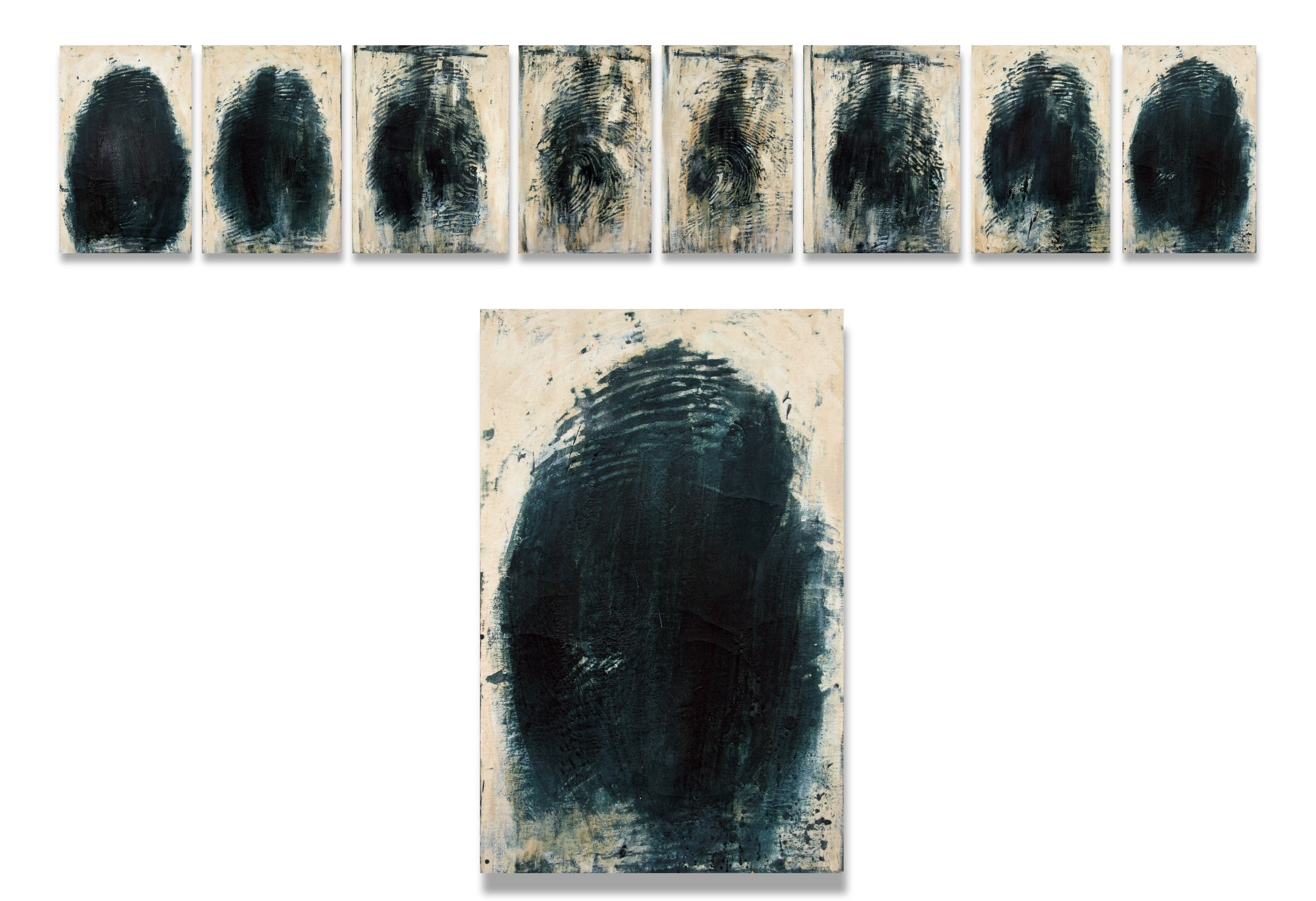Science Against Modern Crime is a five-panel encaustic painting that celebrates the complexity of the natural world and addresses questions about the classification and categorization of information and identity.
The four panels on the left are drawn from an FBI procedural manual depicting the basic categories of fingerprints within the Henry system of classification: arches, loops, whorls, and composites. These anonymous, fundamental human marks are juxtaposed with a set of calligraphic gestures that arch, loop, whorl, and tumble in a way that echoes the structures of their ridge patterns.
Organic and charged with energy, the inevitable variation within the expressive linework hints at the possibility of further categories of classification which do in fact exist within the Henry system – categories that include variations of the basic patterns such as tented arches and central pocket loops.
Steeves is interested in painting that reveals something about our complicated relationship to reality. The gestural mark-making that dominates the panel on the right seems to speak to this in the way that it simultaneously reinforces the logic of the system while pointing towards the ambiguousness inherent in the task of classifying natural forms.




